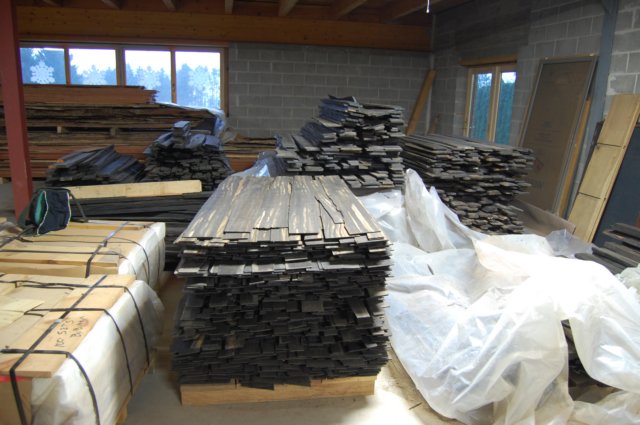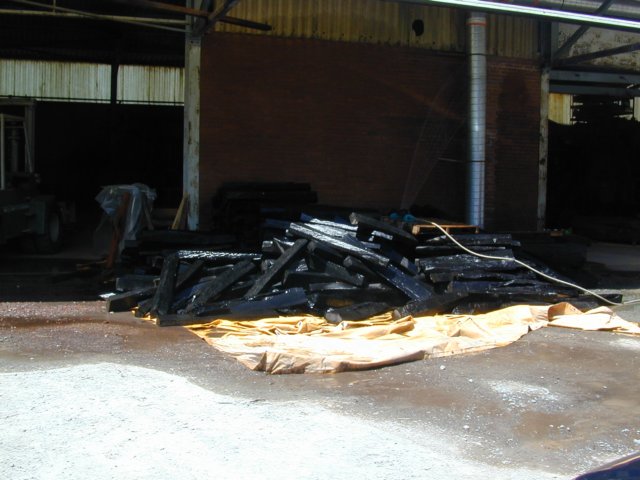You have to admit though that a board that is waxed is not always a sign that it is green.
I'll agree with that, but this block is completely waxed, not just on the ends. Remember, we are talking about my statement, which has to do with the ebony in the auction, not every block of wood under the sun.
1)Totally waxing a properly dried piece of wood is a waste of money, it doesn't add to the stability of the lumber. There is a chance that it can do more harm than good.
2) I'm involved with a lot of woodturners and I can tell you this, every time a newbie buys a block of wood that is completely waxed to turn on their lathe it cracks on them because it was green.
3) Ebony billets are no longer being shipped out of Africa. The pictures you see above was one of the last containers to leave that part of the world. The only ebony legally leaving Cameroon and Gaboon is processed. That means fretboards, sculptures, and 2" square lengths of green waxed ebony. (Cameroon and Gaboon is the only place Gaboon ebony grows)
I buy Martin boards that are waxed. If fact all the ebony I buy is waxed wether it is 4/4 or larger cants. We also wax all the ends of our koa as soon as it is milled. I buy and sell koa boards that are five and ten years old where the ends are waxed and the moisture content is 6 to 8%.
The last time I was at thier factory only the ends where waxed.
I see you are only waxing the ends of the koa and not the complete board.
I'll stand by my statement... a completely waxed block of ebony will be green. To handle a block of ebony that has been completely waxed and working it as if it wasn't green will be asking for problems.
Ebony is different than koa. (we know that)
Let me back up a bit... I never worked with koa so all my information is second hand.
--
Let me tell you a story.
We had a huge gaboon ebony billet that was 25 years old. I'm talking about 8" in diameter. We got an order in for 5/4" thick stock. We sliced this big billet and we checked the MC at center... after 25 years it was at 28% MC. We had to turn down a huge order because we knew it couldn't be dried properly.
---
Waterfall Bubunga - 18" long 7'10" at the widest (that's me)
----
Bottom line: don't believe me, instead buy the wood in the Ebay auction and see what happens for yourself.



